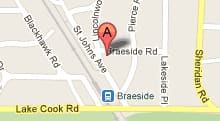What is Reading Fluency?
The simple answer is that speed and accuracy together equal reading fluency. You’ll know your child is fluent when he or she reads correctly, effortlessly, fluidly, and with appropriate phrasing and intonation. Under most conditions, students who are fluent know what they’ve read.
A schoolteacher may say that a child’s reading is fine when he or she is reading grade-level books with a reasonable degree of accuracy. But reading isn’t really functional when it’s simply accurate. While accuracy is necessary, it’s not sufficient if there’s too much effort expended during reading. If the student’s attentional resources are being used on effort, he or she will likely not really comprehend what’s been read. Fluent reading, on the other hand, is automatic. Fluency is most important in silent reading, which is how most of us read, but reading aloud offers clues to the practitioner that fluency has been achieved. Another indicator of fluency is a demonstrated desire to read.
There are two main reasons for any of us to read—for information and for enjoyment. Whether we read textbooks, instructional manuals, directions on a sign, rules for a game we want to play, or a compelling book that a friend recommends, comprehension is always the goal. However, comprehension is very difficult to achieve without fluency.






